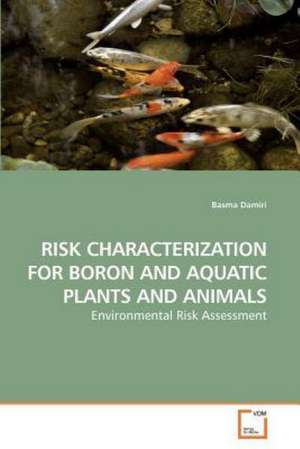Risk Characterization for Boron and Aquatic Plants and Animals
Autor Basma Damirien Limba Engleză Paperback – 24 oct 2013
Preț: 324.78 lei
Nou
Puncte Express: 487
Preț estimativ în valută:
62.15€ • 64.21$ • 51.73£
62.15€ • 64.21$ • 51.73£
Carte tipărită la comandă
Livrare economică 25 martie-08 aprilie
Preluare comenzi: 021 569.72.76
Specificații
ISBN-13: 9783639222074
ISBN-10: 3639222075
Pagini: 108
Dimensiuni: 150 x 220 x 6 mm
Greutate: 0.17 kg
Editura: VDM Verlag Dr. Müller e.K.
ISBN-10: 3639222075
Pagini: 108
Dimensiuni: 150 x 220 x 6 mm
Greutate: 0.17 kg
Editura: VDM Verlag Dr. Müller e.K.
Notă biografică
Basma Rafeeq H. Damiri is a PhD student at Clemson University. Her current research is in RNA interference, knockdown mice/ P450. She received her M.S. in Environmental Toxicology from Clemson University and B.S. in Medical Technology from Al-Quds University, Jerusalem.









